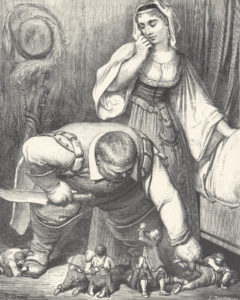Ravel, Ma mère l’Oye (Cinq Pièces Enfantine)

Maurice Ravel’s Mother Goose Suite consists of five short pieces for children. Originally written for piano four hands in 1910, Ravel created the orchestral version the succeeding year.
We have featured works by Ravel several times in this series, more often than most other composers, but Ravel always seems to have something new and interesting to offer. In its extensive entry on Ravel, Grove’s Dictionary of Music and Musicians notes:
[M]uch of his appeal is due to the strong sympathies that inform his work: sympathies with the worlds of children and of animals; and with imagined exotic and antique life. Especially where his music touched on these ideas, Ravel was a decorative artist of the highest order. . . .

Ravel seems equally at home with extreme virtuosity, exoticism, classical forms, and elegant simplicity—the last exemplified nicely in this collection of children’s pieces.
Each movement evokes the mood of the fairy tale, but does not follow any narrative. You can, of course, hear the calm of Sleeping Beauty and imagine the Fairy Garden.
Empress of the Pagodas concerns a Chinese princess who falls under an evil spell, becomes ugly, and is sent into exile. A green serpent rescues her. When they fall in love, the spell is lifted.
More explicitly, the graceful waltz in Beauty and the Beast is interrupted by a lumbering contrabassoon attempting, but mostly failing, to dance along. But finally, the motive of the contrabassoon appears in the solo violin in the highest register (12:25). You decide what it means.
- Pavane de la Belle au bois dormant (Pavane of Sleeping Beauty)
- Petit Poucet (Little Tom Thumb / Hop-o’-My-Thumb)
- Laideronnette, impératrice des pagodes (Little Ugly Girl, Empress of the Pagodas)
- Les entretiens de la belle et de la bête (Conversation of Beauty and the Beast)
- Le jardin féerique (The Fairy Garden)
This performance comes from the Liszt Conservatory in our adopted city of Weimar. Each movement is clearly marked in the video.



